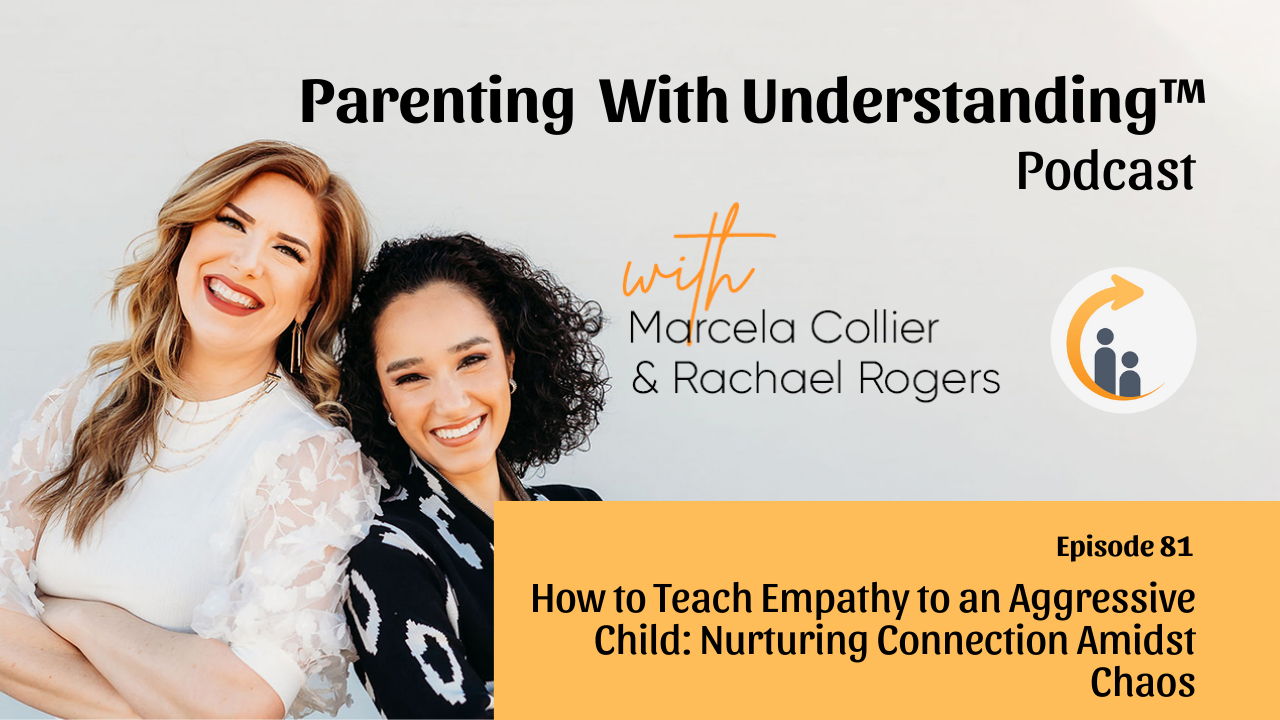Epi #81. How to Teach Empathy to an Aggressive Child: Nurturing Connection Amidst Chaos
Oct 10, 2023
🌿 _A Safe Space for Conscious Parents_
We've all been there—witnessing our child lash out, whether throwing toys, yelling, or even hitting, and feeling that sink in our stomachs.
“What should I do now?”
becomes a repeating whisper in our minds.
Your wish to raise your child free from punitive measures and to foster a nurturing environment where empathy blossoms have often been tested by such instances.
Navigating the tempestuous sea of aggressive behaviors while maintaining a calm, empathic demeanor can feel near impossible.
Your journey to fostering empathy and peaceful cooperation amidst the chaos is not only necessary but deeply commendable—and we’re here to walk through it with you.
1.🌱 Nurturing the Seed of Empathy
Understanding the Roots
Aggression in children often stems from an unmet need or an inability to express emotions adequately.
When your child reacts aggressively, it's their primal way of communicating distress, frustration, or other overwhelming emotions.
The Empathy Mirror
Reflecting empathic understanding doesn’t condone aggressive behavior.
It involves acknowledging the emotion behind the action without validating the act itself. It's a subtle but crucial difference that sows the seeds of emotional intelligence in your child.
This could sound like this, “I see you are angry; I will help you feel your anger without throwing things.”
2. 🌪 in the Storm: Responding to Aggression with Compassion
Taking a Breath
Your responses, rooted in a wish to be a gentle parent, might sometimes be hijacked by feelings of frustration or fears from your childhood.
Taking a breath, pausing, and understanding your emotional state is the first step toward responding with genuine empathy.
A Gentle Approach
Imagine navigating through your response as a gentle stream, carefully carving paths through emotional obstacles.
A response like, “I see you’re really angry right now because you can’t have the toy. It’s tough, isn’t it?” validates emotions while staying firm on boundaries.
3. 🛠 Practical Strategies to Cultivate Empathy
Empathy in Action
Teaching empathy involves consistent modeling. When a child see you respond to their aggression with understanding, they gradually learn to mirror this in their interactions with others.
Encouraging Emotional Expression
Creating an environment where all emotions—joy, anger, sadness—are welcomed and discussed openly fosters emotional literacy, allowing children to extend empathy as they understand varied emotions naturally.
Storytelling as a Tool
Utilize stories to explore emotions and empathetic responses.
Discuss characters' feelings, actions, and consequences, creating a safe space for exploring empathy without directly spotlighting your child’s actions.
4. 🔄 Moving from Aggression to Understanding: A Continuous Journey
Remember, empathy isn’t taught in a day.
Your consistency, gentle understanding, and empathic responses, even when tested by aggressive behaviors, slowly weave into the fabric of your child’s emotional understanding and response patterns.
🎧 Deepen Your Insight with Our Podcast
Dive deeper into understanding and nurturing empathy in your child with our latest episode on “The Parenting With Understanding” Podcast.
Hear stories, insights, and more strategies from experts and parents alike.
🗓 Personalized guidance from HIC Parenting.
We understand how wearying and intricate the journey to gentle parenting can be, especially when dealing with aggression
HIC Parenting Education is here to give you personalized support to break free from angry reactions, bring peace to your home, and raise an emotionally intelligent and confident child.
Apply now for a Free Parent Support Call with a member of HIC Parenting Team, where you can discover your particular path to bring more peace to your parenting and raise confident children.



